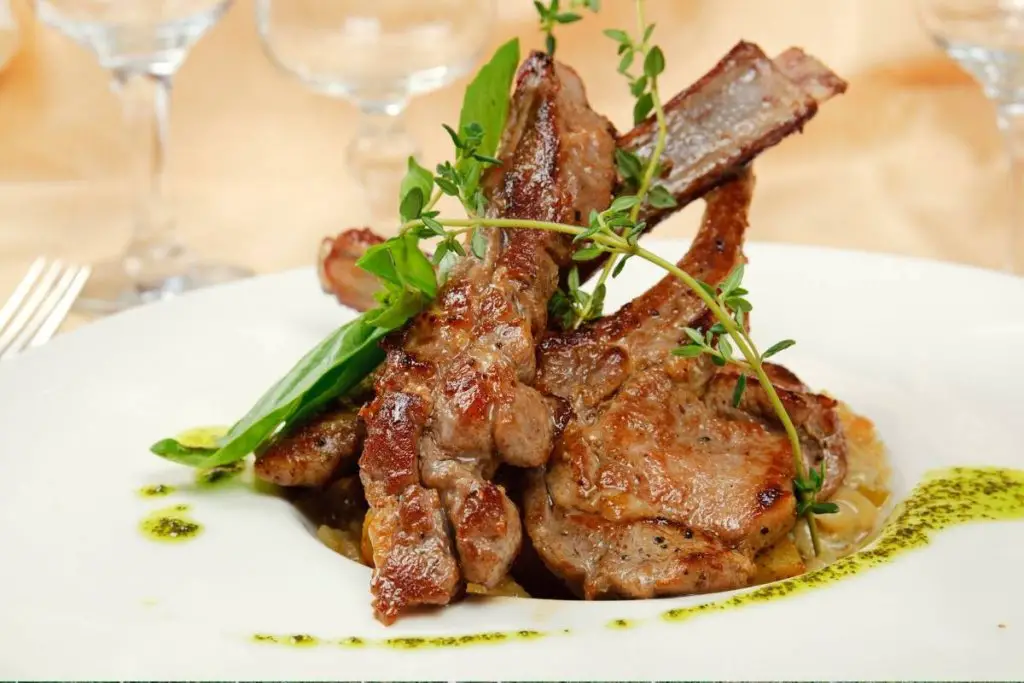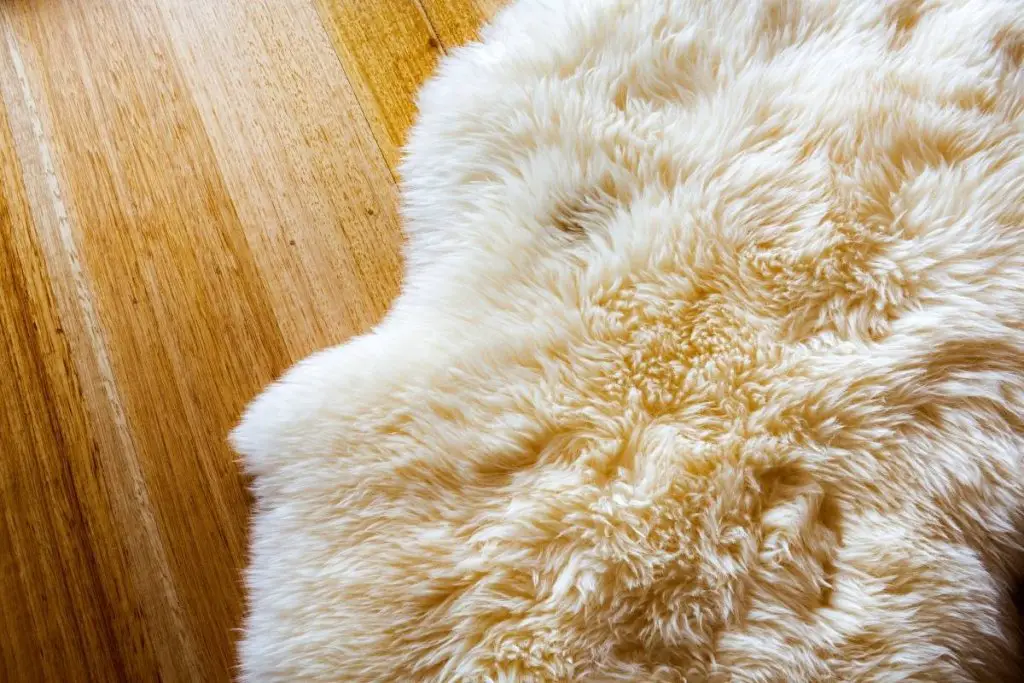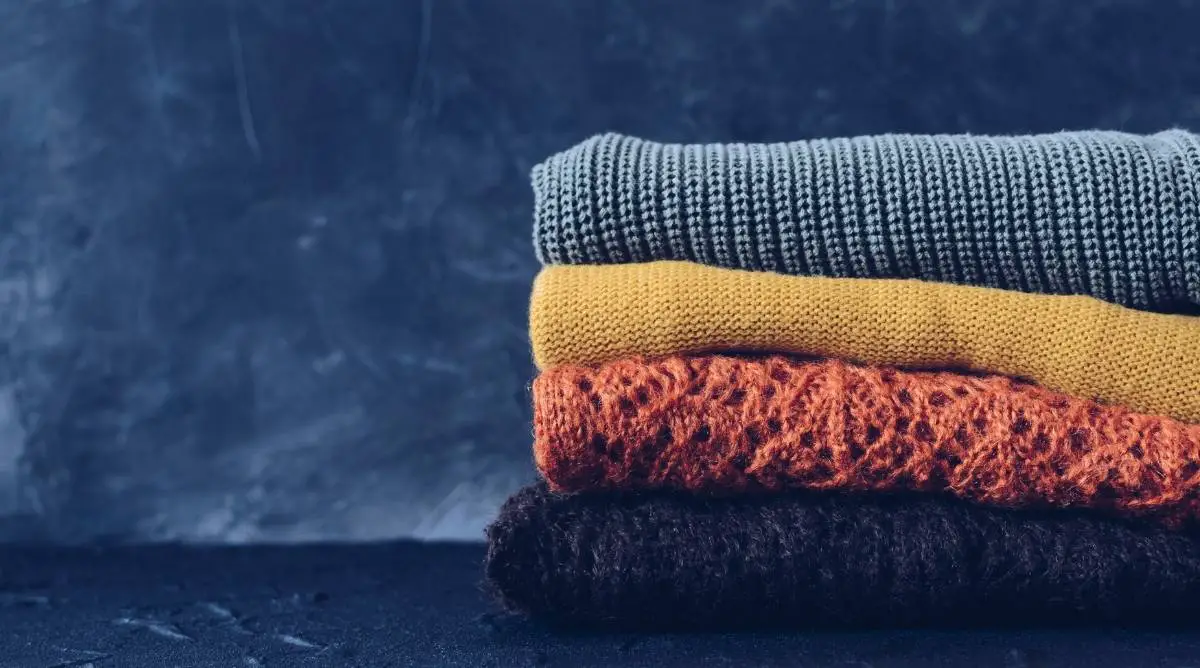Sheep are best known for their wool and meat, but you might be surprised how many other uses there are for sheep products. Other sheep by-products include milk, leather, and cheese and niche products like lubricants, brushes, baseballs, tennis balls, and insulation.
Table of Contents
Sheep meat

One of the most important products derived from sheep is their carcass—the source of meat.
Mutton and lamb are the two primary types of meat that come from sheep carcasses. Lamb refers to the meat from a sheep that is younger than one year old, while mutton refers to the meat from an adult sheep (over one year old). Yearling mutton is a term used for meat from a sheep between 1-2 years old.
Fatty acids from a sheep’s carcass are also commonly added to pet food (such as dog, cat, and chicken feed). They add nutrients with minimal processing needed.
Sheepskin

Sheepskin is processed through tanning and turned into soft leather, and the wool-lined side of the skin is used to provide insulation to textiles. The soft chamois cloth used to wash cars is often made of sheep skin.
Some sheepskins are preserved and sold in markets as pelts. The skin from hair sheep is the most likely to produce high-quality leather.
There are two categories of sheepskin: the wool side and the skin side. The wool-lined side is typically used as the interior of textiles like gloves, jackets, boots, and coats for insulation and comfort. Wool-lined bags, wallets, and purses are also common. The skin side is used for leather products.
Sheep milk
Sheep milk has high energy, protein, and fat content, and is easier to digest and more nutritious than cow’s milk.
Sheep milk is also used to create various kinds of sheep cheeses. Sheep cheese makes up about 1.3% of the total cheese production in the world.
Feta, Ricotta, Roquefort, and Pecorina Romano cheese are all made from sheep’s milk. Sheep’s milk can also be turned into ice cream, yogurt, and butter.
Wool

Wool is widely used for clothing, from sweaters to socks. The furniture industry also uses wool to make covers for chairs and upholstery, as well as to make carpets.
A few specific uses:
- Mattresses are often filled with wool
- Covers for tennis balls
- Hanging basket liners
- A New Zealand study found that wool proteins can be added to the diets of animals like cats as a nutritional supplement
- In the United Kingdom, there is a company that produces caskets made out of wool
- Mulch pads created from wool are used in gardening
- Bricks can be reinforced with wool and seaweed as a less toxic alternative to traditional materials
- Lanolin is harvested from sheep’s wool during the scouring process and is used in the production of various kinds of lubricants used in automobiles, pharmaceuticals, and cosmetics (such as shampoos and lotions)
- Wool proteins have been used for bone graft implants, new wound dressings, and medical sutures
Internal organs
Sheep organs are eaten in many parts of the world, including in the traditional Scottish dish called Haggis.
Sheep intestines are also used for sausage casings.
Sheep innards were originally used as the strings of musical instruments and tennis racquets.
Horns, Hooves, and Bones
Sheep horns, hooves, and bones are the raw materials for:
- bone jewelry
- bone charcoal
- gelatin desserts
- capsules
- crayons
- film
- insecticides
Manure
Sheep manure is used as a high-quality fertilizer. It contains significant quantities of nitrogen and phosphorus.
Other
- Sheep eyes are often used for dissection by medical students, as they closely resemble human eyes.
- Sheep blood is also commonly used for making blood sausages in many parts of the world., including the UK.

